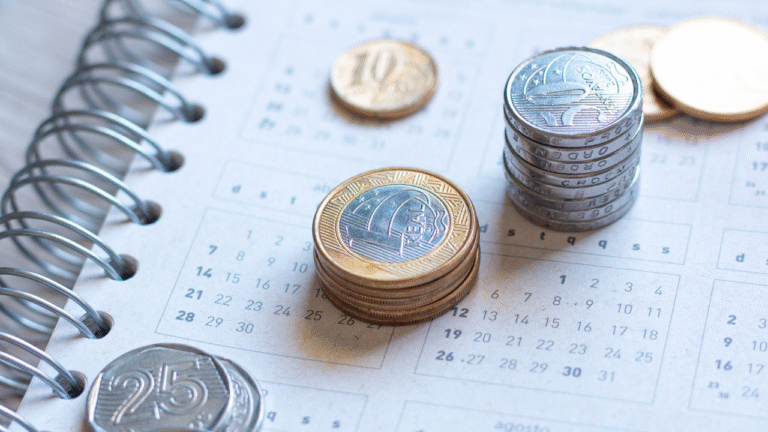Introduction
Managing money can be overwhelming, especially when expenses keep piling up and savings seem impossible. But there’s one proven method that can transform the way you handle your finances: Zero Based Budgeting. Unlike traditional budgeting methods, this strategy gives every dollar a job, ensuring that no money is wasted and every expense is accounted for.
In this detailed guide, we’ll break down Zero Based Budgeting Step by Step, explore why it’s considered one of the best budgeting strategies, and share beginner budgeting tips to help you start today. Let’s dive in!
Table of Contents
What is Zero Based Budgeting? 🤔
Zero Based Budgeting (ZBB) is a financial planning strategy where your income minus expenses equals zero. This doesn’t mean you’re left with no money—it means every dollar is assigned a purpose: spending, saving, investing, or paying off debt.
For example:
- If you earn $3,000 a month, you’ll allocate the entire $3,000 across different categories like rent, groceries, savings, and debt repayment.
- At the end of the month, your balance should be $0 because you’ve already planned where each dollar goes.
👉 This ensures you’re intentional with your money, reducing wasteful spending.
External Resource for Learning More: Investopedia on Zero Based Budgeting
Why Zero Based Budgeting Works ✅
- Full Control Over Your Money – No more wondering where your money went. Every dollar has a clear purpose.
- Prevents Overspending – Since everything is tracked, you’re less likely to waste money on non-essentials.
- Helps You Reach Goals Faster – Whether it’s saving for an emergency fund, paying off debt, or investing, this method pushes you closer to your goals.
- Adaptable for Any Income Level – Whether you earn $1,000 or $10,000 a month, Zero Based Budgeting works.
Zero Based Budgeting: Step-by-Step Guide 📝

Let’s break down the exact process of setting up your Zero Based Budget.
1. Calculate Your Monthly Income
Start by writing down your total monthly income. This includes:
- Salary (after taxes)
- Side hustles
- Freelance income
- Any other regular income streams
2. List All Expenses
Make a complete list of fixed and variable expenses:
- Fixed: Rent, utilities, insurance
- Variable: Groceries, entertainment, shopping
👉 Check out this helpful guide on Rent vs. Income to see how much of your salary should go toward housing.
3. Assign Every Dollar a Job
Allocate your income across all categories until there’s no money left unassigned.
Example Budget:
- Rent: $1,000
- Groceries: $300
- Transportation: $200
- Savings: $400
- Debt Repayment: $500
- Entertainment: $100
- Miscellaneous: $500
Total = $3,000 (matches income)
4. Track Spending Throughout the Month
Use apps like YNAB (You Need a Budget) or Mint to monitor spending. Stick to your plan and adjust if needed.
5. Adjust and Review Monthly
Life changes, and so should your budget. If you get a raise, new expenses, or want to save more, update your budget accordingly.
Best Budgeting Strategy: Why Zero Based Wins 🏆
While there are many methods like the 50/30/20 rule or envelope system, Zero Based Budgeting stands out because:
- It leaves no room for wasted money
- It adapts to your unique lifestyle
- It’s proactive rather than reactive
This makes it one of the best budgeting strategies for people serious about financial freedom.
Beginner Budgeting Tips 🌱
If you’re just getting started with budgeting, here are some simple tips:
- Start Small: Don’t overcomplicate. Begin with just a few categories.
- Use Cash for Flexible Spending: This helps you avoid overspending.
- Track Daily: Even a quick 2-minute check-in can save you from mistakes.
- Be Realistic: Don’t cut out all fun expenses—it’s about balance.
- Stay Consistent: The first month may be tough, but it gets easier with practice.
How to Save Money with Budgeting 💡
Zero Based Budgeting is one of the best ways to save money because:
- You’ll automatically allocate funds to savings each month.
- It prevents “accidental spending” since all money has a role.
- You can prioritize savings goals like emergency funds, vacations, or retirement.
Example: If your goal is to save $5,000 in a year, you’ll plan to set aside about $417 each month. With ZBB, you assign that amount right away, making it non-negotiable.
Common Mistakes to Avoid 🚫
- Forgetting irregular expenses (car repairs, annual fees)
- Being too strict and cutting out all fun
- Not tracking throughout the month
- Ignoring debt repayment
Remember, the key is balance—your budget should help you, not restrict you completely.
Real-Life Examples of Zero Based Budgeting 📊
Sometimes the best way to understand how Zero Based Budgeting works is by looking at real-life examples.
Example 1: The Young Professional
Sarah earns $4,000 per month. Her Zero Based Budget looks like this:
- Rent: $1,200
- Student Loan: $500
- Savings: $600
- Retirement Investment: $400
- Groceries: $300
- Transportation: $200
- Entertainment: $200
- Miscellaneous: $600
By assigning every dollar, Sarah is able to pay off debt aggressively while also saving for her future.
Example 2: The Family Budget
The Johnson family earns $6,500 a month. Their budget includes:
- Mortgage: $1,800
- Groceries: $800
- Childcare: $1,000
- Retirement Savings: $800
- Debt Repayment: $700
- Utilities & Bills: $600
- Fun/Leisure: $300
- Emergency Fund: $500
- Miscellaneous: $1,000
They’ve accounted for everything—including fun and emergencies—while staying disciplined.
Tools and Apps for Zero Based Budgeting 📱

To make the budgeting process easier, you can use financial tools and apps designed for Zero Based Budgeting.
- YNAB (You Need a Budget): A popular app built specifically around the Zero Based method.
- Mint: Great for tracking spending and managing categories.
- EveryDollar: A tool created by financial expert Dave Ramsey, perfect for simple Zero Based Budgets.
- Spreadsheets: If you prefer manual control, Google Sheets or Excel work perfectly.
👉 Pro Tip: Start with a spreadsheet to understand the basics, then move to an app once you’re comfortable.
FAQs: About Zero Based Budgeting ❓💡
Q1. How much of my income should go to rent?
Most experts recommend spending no more than 30% of your income on housing costs.
Q2. What is the 50/30/20 rule?
It’s a popular budgeting rule that allocates 50% of income to needs, 30% to wants, and 20% to savings and debt.
Q3. How do I start budgeting if I’ve never done it before?
Begin by tracking your expenses for a month, then create simple categories for essentials, savings, and discretionary spending.
Q4. Can Zero Based Budgeting help me save money?
Absolutely! By giving every dollar a job, you avoid overspending and ensure savings are part of your budget. Many people find they save more consistently with this method.
Q5. What is the difference between Zero Based Budgeting and the 50/30/20 rule?
The 50/30/20 rule allocates income by percentages—50% needs, 30% wants, 20% savings. Zero Based Budgeting, on the other hand, allocates every dollar based on your exact expenses and goals, offering more control and customization.
Final Thoughts 🎯

Budgeting isn’t just about cutting costs—it’s about creating a money plan that supports your lifestyle, goals, and peace of mind. When you manage your income intentionally, you gain full control over where your money goes each month. This approach encourages smart spending, builds strong saving habits, and makes it easier to pay off debt without feeling overwhelmed.
By following a clear step-by-step process, using strategies that fit your life, and applying practical beginner tips, you can stop wasting money and start directing your finances toward what truly matters—whether that’s building an emergency fund, investing in your future, or simply enjoying life without financial stress.
✨ Take the first step today, stay consistent, and you’ll soon see how a thoughtful budget can transform both your finances and your confidence.











